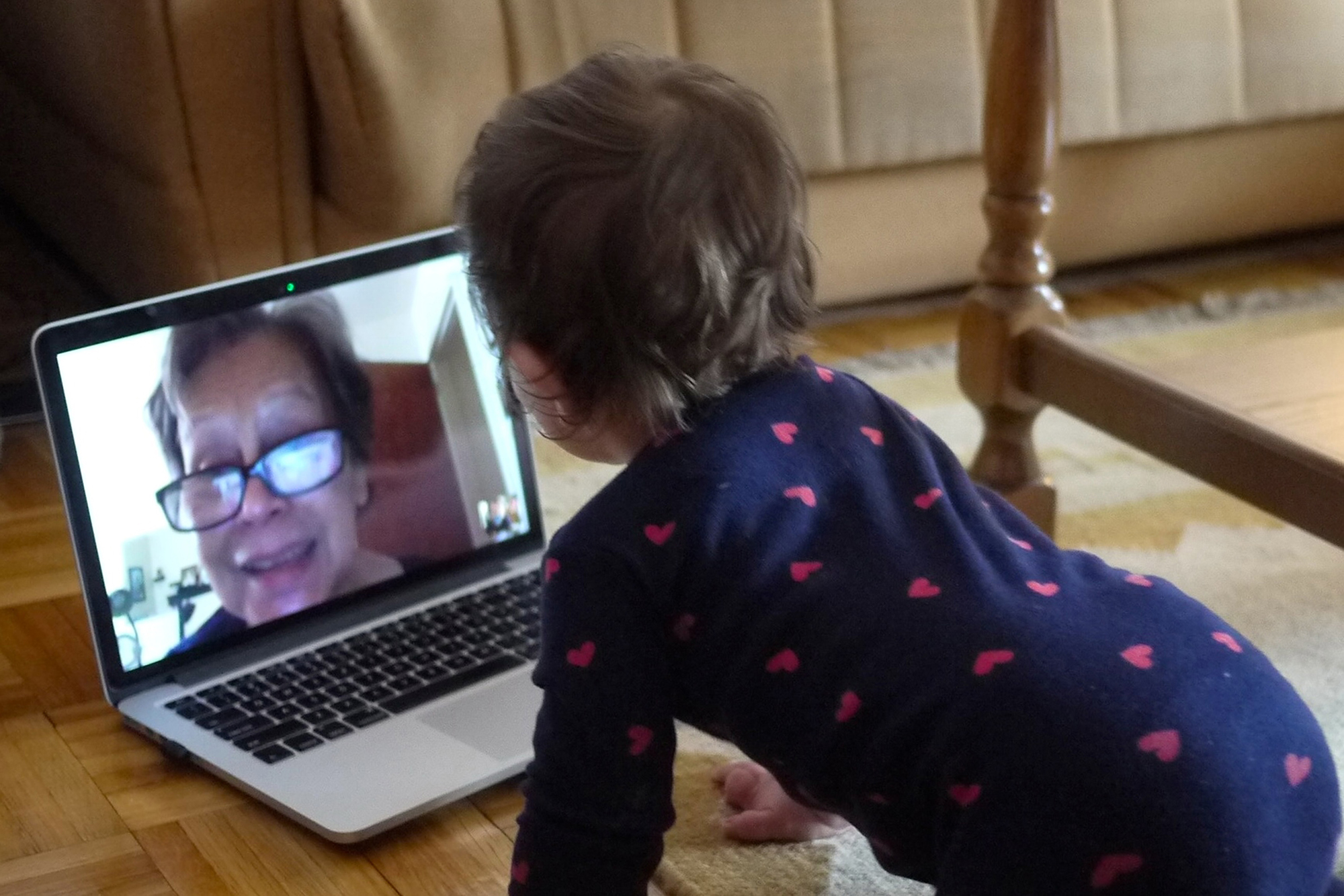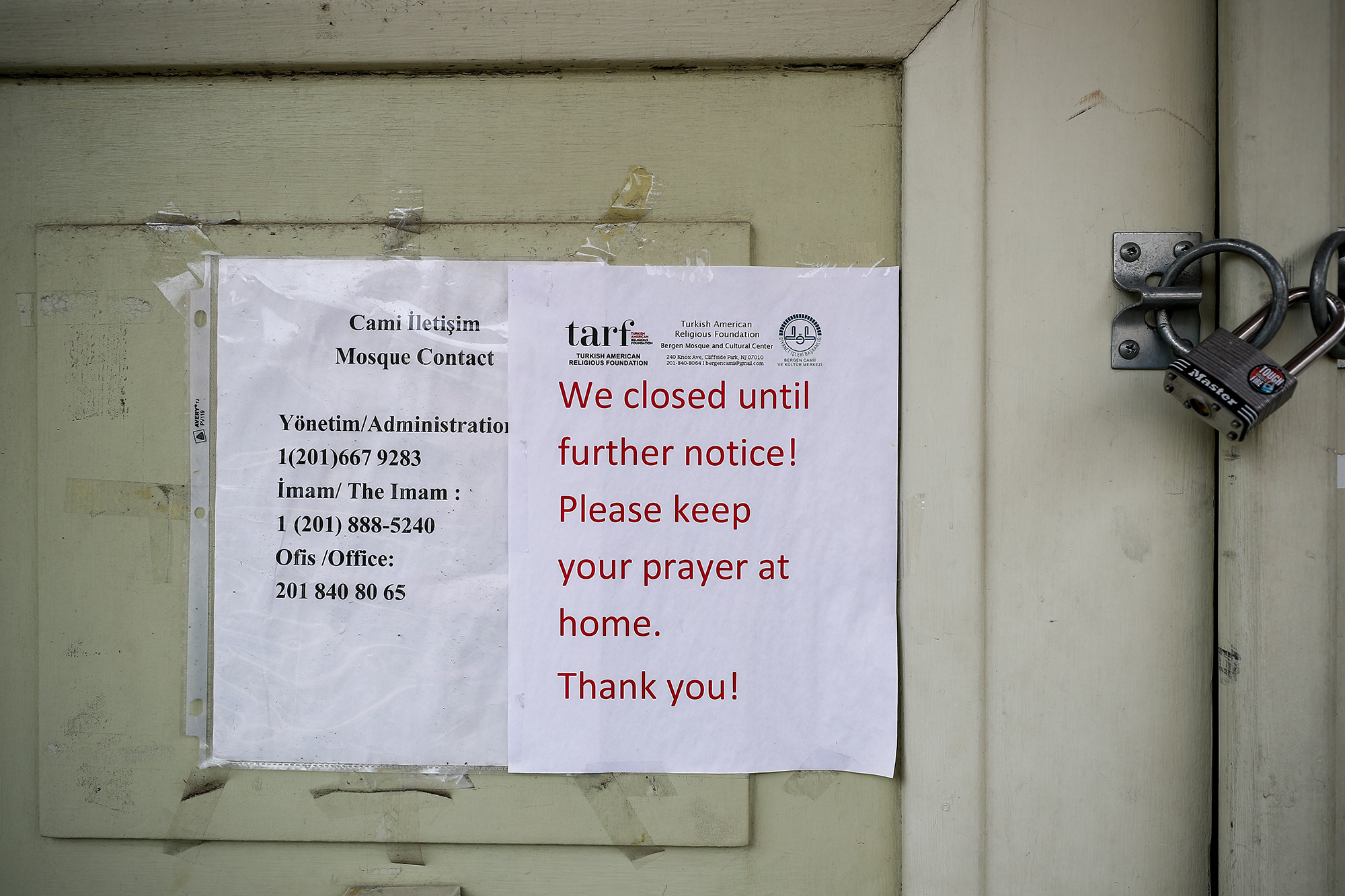“[My one-year-old] sees me, he hears my voice, he looks at me for a second, but that’s all,” said Juanita Moss, a mother in San Francisco, California. Her three children are in foster care, and for the past six weeks, video chats have replaced in-person visits. “My son, [who is] four years old, has a hard time expressing feelings. He’s very verbal about it, it’s painful to watch. He will kick and scream about how much he wants me…he’s constantly saying he wants to ‘come home, mommy.’”
San Francisco enacted a citywide shelter-in-place order on March 17. Prior to the lockdown, Moss was seeing her three children twice a week in supervised settings like the public library or a designated visitation center. Now, she can only see her children through a screen.
Get TalkPoverty In Your Inbox
In response to the pandemic, child welfare agencies around the nation have been limiting or completely cutting off in-person visitation between children and their parents, leaving many families wondering when they will be in the same room again. It’s not just the immediate emotional consequences at stake: the extended time apart is bound to weaken some parents’ reunification cases. Experts are concerned it will lead to permanent dissolution of families unlucky enough to have open cases during the pandemic.
Although people unfamiliar with child protective services might believe the term refers to a unified national agency, “CPS” is actually an informal moniker that references a network of individual agencies run at state and jurisdictional levels under a variety of names, which are held together by a loose set of federal guidelines and a complex web of federal and state funding sources.
In some states, like New York and California, there have been no official statewide orders cutting off all in-person visitation; instead agencies have been directed to make decisions on a case-by-case basis. But those on the ground say this is still leaving many parents without a voice in the decision-making process.
Despite state-level guidance that visits take place whenever possible in New York, for example, “in individual cases we are seeing visits being curtailed…you might have a foster mother who has a vulnerability to COVID so she doesn’t want the children in her care going home for the weekends with their parents and coming back,” said Emma Ketteringham, managing attorney for the family defense practice with the Bronx Defenders.
In other states, like Idaho and Illinois, all in-person supervised visitations have been suspended. A few states, like Louisiana, continue to legally allow in-person supervised visitations, but are closing their buildings to the public and directing employees to work from home, which means supervised visitations, which often take place in these buildings and require staff to be physically present, cannot practically take place. While agencies appear to be allowing remote visitation when possible, for some — like parents with newborns and toddlers or children with developmental delays — remote visits just don’t work. In other cases, the parents, foster families, or agencies themselves might not be equipped with the technology necessary to facilitate remote visits.
Even in cases where these factors don’t apply, video communication is a meager replacement for face-to-face contact between a parent and a child, interrupting crucial bonding and raising the possibility of increased anxiety and depression in both parties, according to Richard Pittman, deputy public defender at the Louisiana Public Defender Board. Pittman expressed particular concern that parents might become so dejected by the loss of substantive contact with their children, as well as the loss of therapeutic services and mandatory classes that has gone hand-in-hand with the curtailed visits in many locations, that they might disengage altogether from the case. “Any progress they’ve made healing from the trauma of the initial removal is going to be reversed through all of this,” said Pittman.
Moss’ youngest child turned one shortly before the lockdown but had been in Texas with his foster mom on his birthday. Moss has still not been able to celebrate with him in person, and she’s terrified that she is now also going to miss his first steps.
“[He] had a long hard time learning to sit up and crawl. Luckily before this [lockdown] happened I got to see him to crawl and sit up. Now he’s on the verge of standing up on his own and I should be there for that. [His foster mom] is experiencing all this stuff that I should experience…I think it’s just going to break me if I don’t see my son walking,” she said. Moss also noted that her son has struggled with a recurring bronchial cough, which is particularly stressful during the pandemic, but she is barred from even texting his caregivers to inquire about his health without the social worker’s permission.
In child welfare cases, the consequences go further than feelings. Under the Adoption and Safe Families Act (ASFA), agencies are required to file for termination of parental rights when a child has been living in a non-relative out-of-home placement for 15 of the past 22 months. Some states have shortened that timeline to be as few as 12 months. Although parent attorneys should have a good case for requesting an extension — ASFA allows for consideration of mitigating circumstances and it’s hard to think of a better one than a pandemic — those extensions are neither guaranteed nor infinite. And once a termination petition is filed, bonding between parent and child is a crucial determining factor.
The factors that are used to determine whether or not it is in a child’s best interest to keep them permanently separated from their parent vary somewhat by state, but typically revolve around the ASFA timeline, the parent’s completion of court-ordered services like drug treatment and parenting classes, and the bond between parent and child, which is often measured by the frequency and quality of their visits.
“An agency can say ‘we understand the reason there weren’t visits is because of the coronavirus, but at this point it’s been x many months in foster care and they haven’t made progress and it would hurt the kids to go home now,’” said Amy Mulzer, a family defense appellate attorney in New York and an Elie Hirschfeld Family Defense Fellow at the NYU School of Law Family Defense Clinic.
Shayna, a Native American mother who lives in Wisconsin and asked that her real name not be printed in this story, has two children out-of-home in two different counties. Her youngest child has been on an adoption track, which means Shayna is fighting an uphill battle to have him returned home rather than having her parental rights terminated and her child forcibly adopted to his current caregivers. For her, the issue of bonding is not an abstract future hypothetical; it’s a very real factor she must now find a way to prove without being able to interact with her three-year-old in person.
“It seems like they are using the coronavirus as a reason to keep my son from me because they know the court date is coming up, which is not good because they don’t have observations on me from now to then,” she said. Her son’s foster placement had been in pre-adoptive status, but she was recently able to get her case placed back on a dual track, which means adoption and reunification are both on the table for the next six months. For her, visits could literally make or break her reunification case — but she says the social worker is refusing to use an approved family member as a supervisor in order to continue visits, even though that is technically allowed. “They are not utilizing any other options, just using this coronavirus to stop and hold the visits. I think they should look at the bigger picture: this little boy needs to be back with his mom.”
Less restrictive alternatives exist. For example, Richard Wexler, executive director of the National Coalition for Child Welfare reform, suggested moving visits to open spaces like parks when possible, and expediting the return of children who can safely be returned home. San Francisco recently issued an order requiring agencies to make efforts to supply families in need with the appropriate technology to engage in remote video visitation. It also directed agencies to analyze and identify cases in which children were nearing reunification, and to fast-track their return home when possible. Advocates in New York City say similar efforts are being made, though it is unclear (in both locations) exactly how many families are on track to actually receive these benefits. These directives also leave a host of other details unanswered, such as the minutiae of moving a child from one location to the next — suddenly far more complicated when having to also consider infection control.
The Children’s Bureau within the federal Department of Health and Human Services issued a letter in response to the pandemic that included suggestions to state agencies about how to handle a variety of topics, including parent-child visitation. The guidelines discourage courts from “issuing blanket court orders reducing or suspending family time,” and asks agencies and courts to “be mindful of the need for continued family time, especially in times of crisis and heightened anxiety.”
While these suggestions come from a credible source and can bolster arguments in favor of continued family visitations, without Congressional action or agency rulemaking, they are not actual orders. This leaves states and agencies the license to develop their own pandemic protocols.
“If a child can’t see their parents for months at a time, they start to believe maybe their parents don’t love them,” said Michelle Chan, a mother with prior child services involvement, and founder of California Rise, a Bay area child welfare activist group. “I really am worried about the deterioration of the parent-child bond. I feel it should be the most important thing.”











